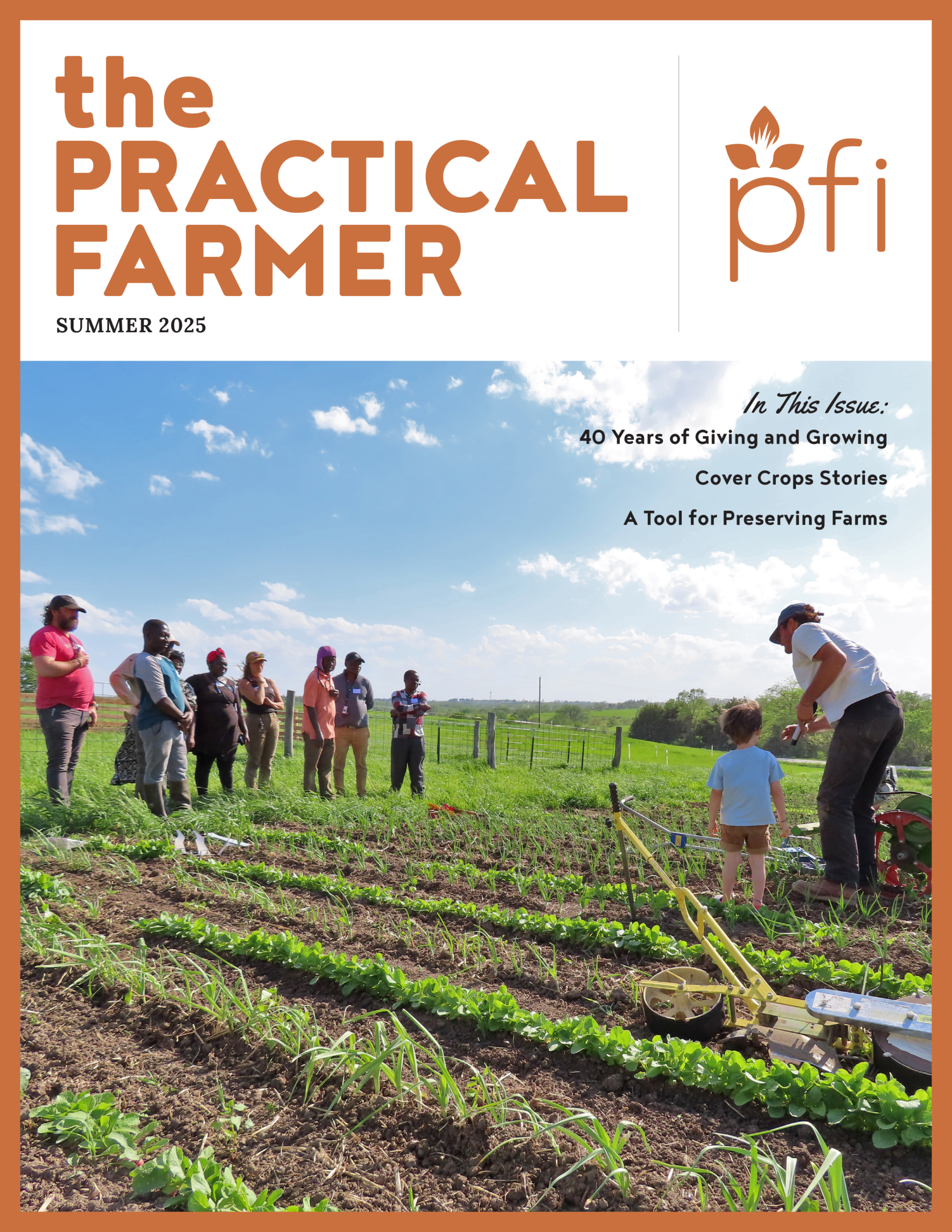the Practical Farmer: Summer 2025
Table of Contents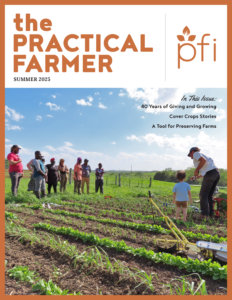
- From the executive director
- Beginning Farmers
- Horticulture
- Field Crops
- Habitat
- Field Days
- PFI Leaders
- Livestock
- Member Book Review
- Member Photos
- PFI News
On the cover:
Jordan Clasen shows a group of field day attendees how he and Whitney Clasen use a Jang seeder for radishes and onions at an early-season field day on their farm in Earlham, Iowa, on May 15. See other photos of early-season Spanish- and Swahili-language field days on page 34.
Beginning Farmers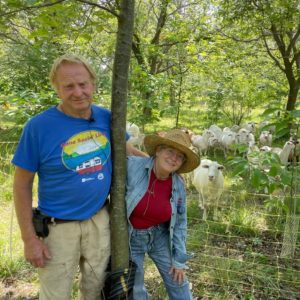
A Tool for Preserving Farms
Conservation easements can protect land while making it more affordable for the next generation.
Read more
Horticulture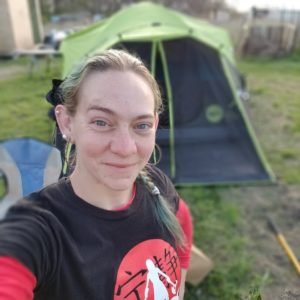
Cover Crops Stories
A trio of tales shows how horticulture farmers use cover crops in sometimes creative and surprising ways.
Field Crops
After the Flood
Some farmers are choosing cover crops in the wake of more frequent extreme-weather events.
Habitat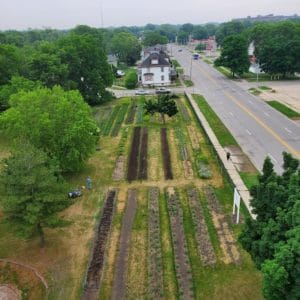
If You Plant It, They Will Come
A dose of inspiration mixed with valuable partnerships leads to a garden oasis for people and pollinators in urban Waterloo.
Field Days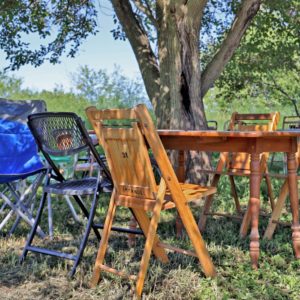
2025 Field Day Season Is Here
If you’re not already excited for the return of our full schedule of field days, this promo should motivate you.
PFI Leaders 
40 Years of Giving and Growing
PFI cofounder Dick Thompson said, “Diversity is probably the only solution in agriculture.” This has proven to be a valuable guiding principle for PFI.
Livestock 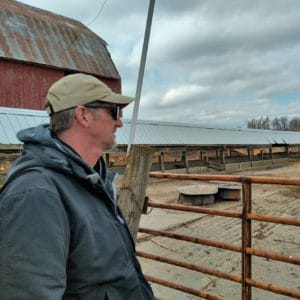
Be Like Water
As he plans for the future of his farm, Ryan Herman is flowing with the currents of change to adapt his sheep grazing operation for the present moment.
PFI News
Have You Seen PFI’s Newest Videos?
PFI’s videos highlight a range of farming topics members have told us they’re interested in, and showcase the knowledge and innovations of PFI farmers.
Recent videos have explored how farmers are starting cover crop seed businesses; finding solutions for grazing livestock on cover crops; restoring native perennials – and bringing back native birds; planting on-farm habitat for beneficial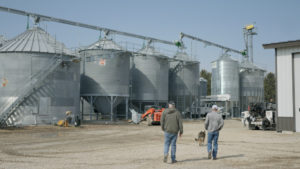 insects; and more.
insects; and more.
Some videos have also been released with Spanish subtitles so the content is more accessible to Spanish-speaking farmers. These include one on timing when to roller-crimp a rye cover crop and roller-crimping cereal rye in soybeans.
Explore all PFI’s videos at practicalfarmers.org/video. To get notified when new videos are released, subscribed to our YouTube channel at youtube.com/@practicalfarmers.
Represent PFI On or Off the Farm
Now that field day season is here, show your support for PFI by wearing PFI-branded items at an upcoming event.
Our merchandise includes a range of hats, T-shirts and long-sleeved shirts and hoodies – as well as our signature short-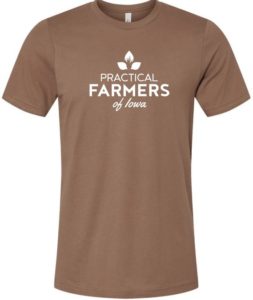 sleeved “Don’t Farm Naked” shirts. We also have youth T-shirts and onesies for the littlest PFI members.
sleeved “Don’t Farm Naked” shirts. We also have youth T-shirts and onesies for the littlest PFI members.
Wearing PFI merchandise helps spread the word about our programming in communities far and wide.
Order online at engage.practicalfarmers.org/shop-pfi for delivery anywhere in the U.S.,or find our merchandise at an upcoming PFI field day.
Shop Local (and PFI) With Our Local Foods Directory
Farmers market season is upon us. PFI fruit and veggie growers are selling a range of fresh fruits and vegetables, fragrant flowers, vibrant salad greens, eggs and meats, value-added products – and more – at their stands, in on-farm shops and at brick-and-mortar businesses.
Our Local Foods Directory, hosted by MarketMaker, can help you find and support a PFI grower near you. Visit practicalfarmers.org/local-foods-directory for more information.
And if you’re a grower who’s not yet in the directory, contact Emma Liddle at emma.liddle@practicalfarmers.org or call the office at (515) 232-5661 to get your farm business added.
Register for a Virtual Cover Crop Workshop on Aug. 5
New to cover crops or ready to take them to the next level? Register for PFI’s Virtual Cover Crop Workshop, taking place Tuesday, Aug. 5, from 2–5 p.m.
The free, virtual event offers an afternoon of sessions for farmers of all cover cropping experience levels – whether they’re seasoned practitioners or just starting out.
Attendees will hear how to:
• Get started with cover crops
• Graze cattle on cover crops
• Manage cover crops in drought and flood years
• Reduce inputs using cover crops
To register, visit practicalfarmers.org/virtual-cover-crop-workshop.
On-Farm Research Corner
Overwintering Greens
n Iowa’s northern winters, most crops die after the first hard freeze. But some crops – including certain varieties of greens – are cold-hardy and can survive these conditions, with the right care. This practice, called overwintering, produces an early-spring crop that is especially delicious. To keep from freezing, crops grown over winter increase the sugar concentration in their cells. This leads to a sweeter taste.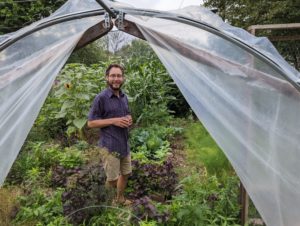
Since 2022, four farms involved with PFI’s Cooperators’ Program have done eight trials on overwintering greens for spring harvest. To overwinter greens, farmers plant them in the fall and usually add protection such as a low tunnel or straw as the weather turns cold. PFI’s farmer-researchers have investigated questions such as which greens varieties can overwinter on their farms and when they should plant spinach for optimal harvest windows and yields.
Spinach is the classic green to overwinter. PFI farmer-researchers have observed they can reliably keep spinach alive throughout Iowa with some winter protection. Trials spanning two years and five farms have shown that planting spinach in early to mid-September usually results in higher total yields than waiting until later in the fall to plant. However, planting a second crop of fall spinach near the end of September can extend spring harvest windows until April in some conditions.
For example, in 2021-2022, Jon Yagla found that on his Iowa City, Iowa, farm, a mid-September seeding produced more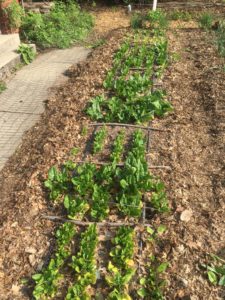 than double the weight of spinach. It also spanned a longer harvest window than two later seeding dates.
than double the weight of spinach. It also spanned a longer harvest window than two later seeding dates.
Emily Fagan and Hannah Breckbill of Humble Hands Harvest in Decorah, Iowa, have taken part in two trials where they tried overwintering non-spinach varieties like kale, mustards, lettuces and herbs. They’ve learned they can get a good early-winter crop from some hardy varieties in a high tunnel, but will not bet on non-spinach greens making it to spring alive.
“My general impression of overwintering plants is that the conditions of the winter – for example, the timing of cold snaps and warm-ups – seem to matter a lot,” Emily says. “My approach is to just keep trying. If something doesn’t make it through winter well one year, it might do a great job the next.”
Cover Crops Show Promise for Expanding Fieldwork Days
Results are in from the first year of a PFI on-farm research trial looking at whether farmers who use cover crops have more days suitable for fieldwork. Farmers from 15 operations took part in the trial in 2024.
While more research is needed, most participants reported that in at least half or more of the weeks between April and November, they had more days suitable for fieldwork than the U.S. Department of Agriculture’s average for their district.
The trial will continue in 2025, with a goal to note any differences from year to year. The data will also deepen our understanding of how cover crops can support farmers as they manage soil health and navigate weather-related challenges.

